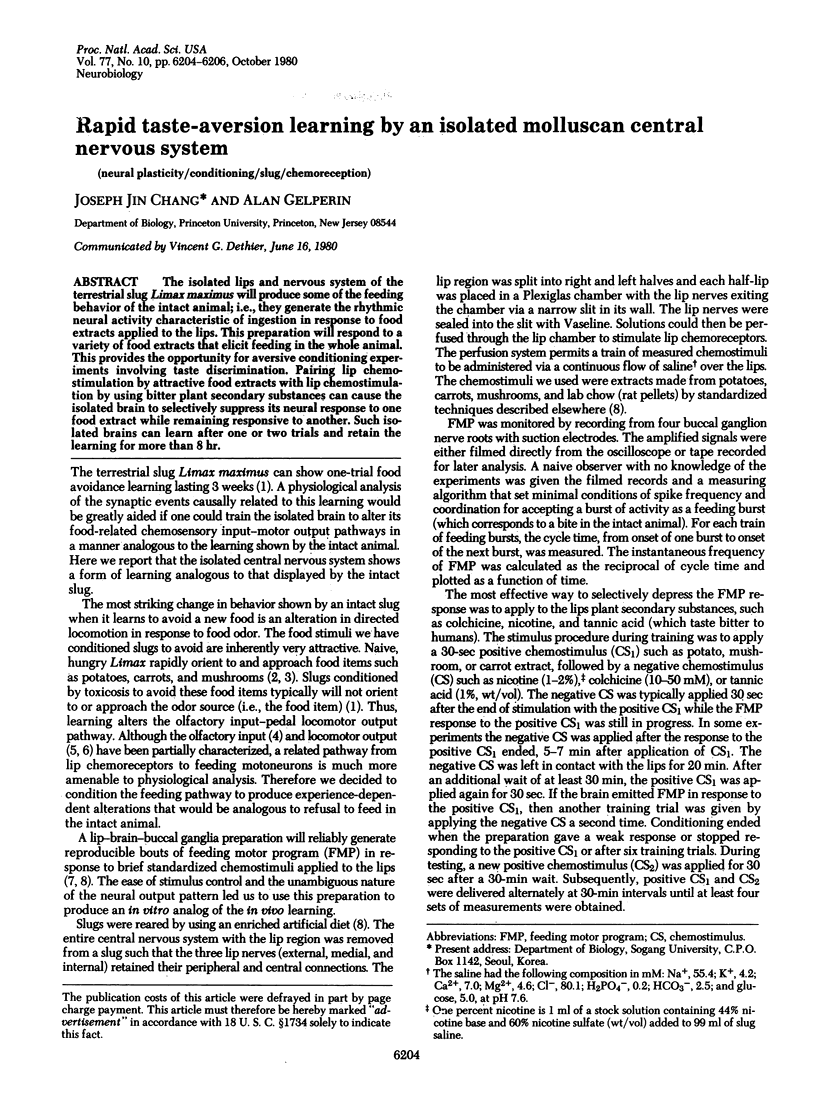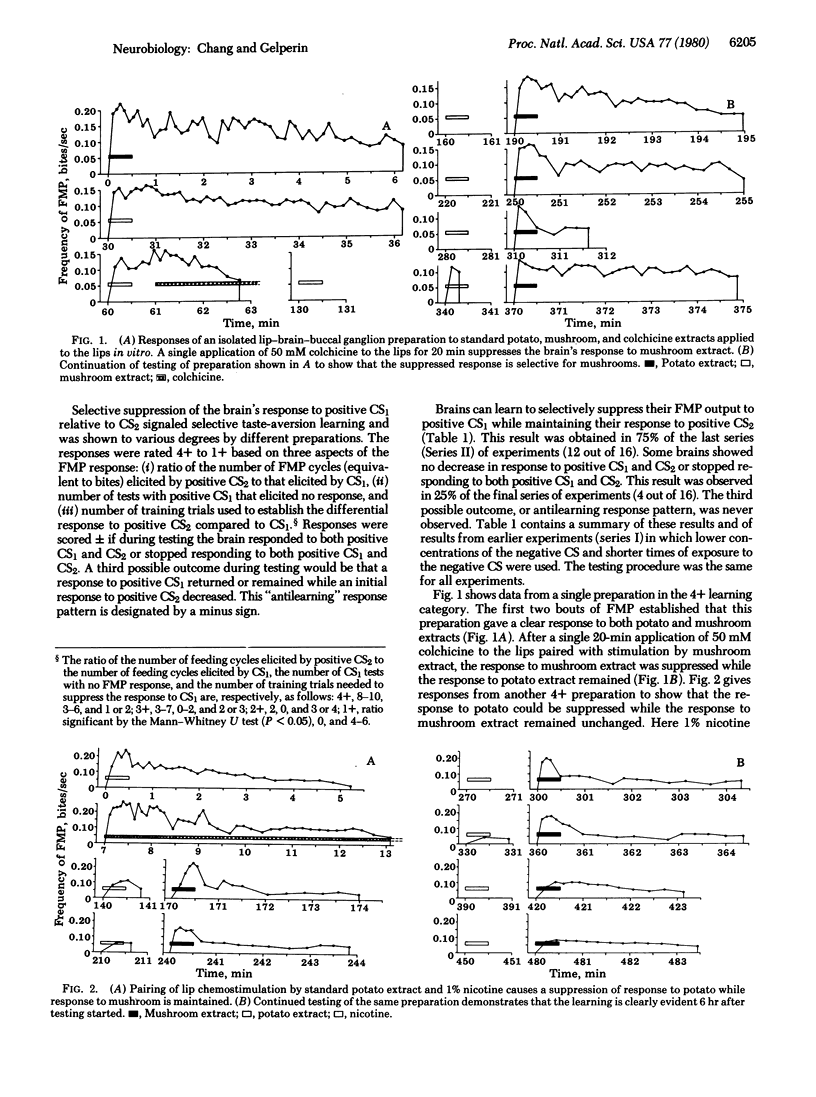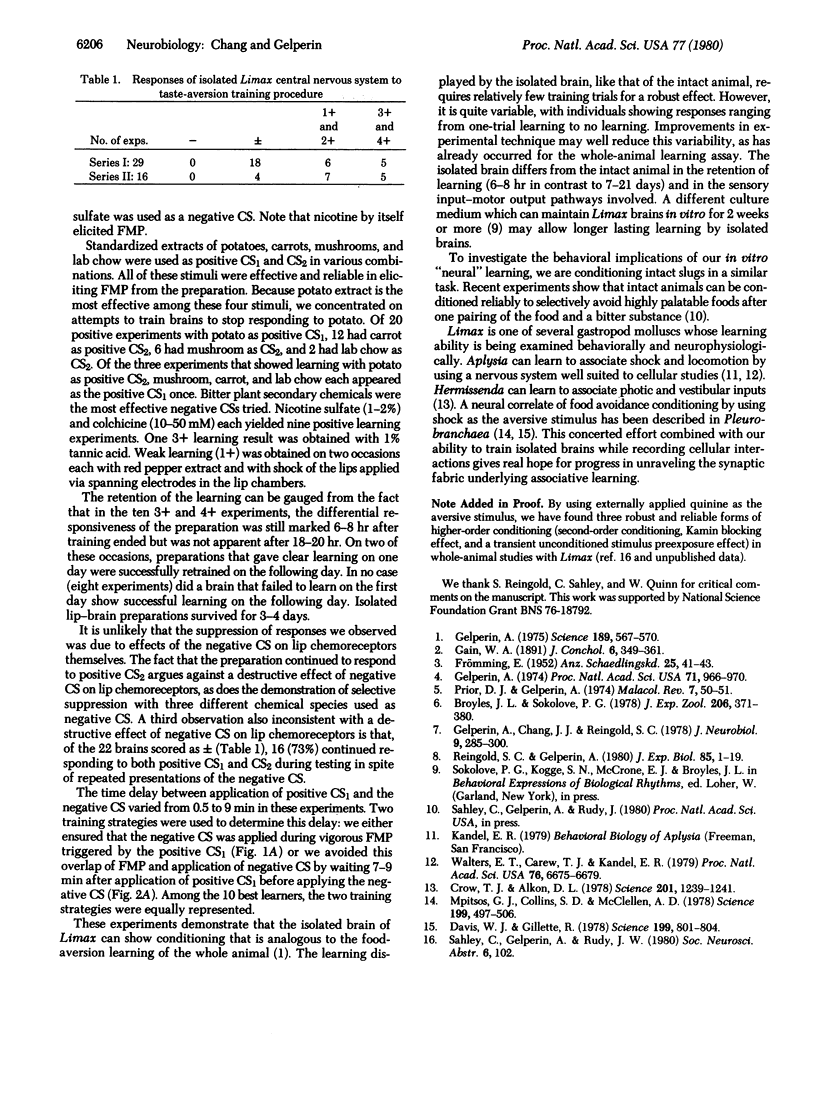Abstract
The isolated lips and nervous system of the terrestrial slug Limax maximus will produce some of the feeding behavior of the intact animal; i.e., they generate the rhythmic neural activity characteristic of ingestion in response to food extracts applied to the lips. This preparation will respond to a variety of food extracts that elicit feeding in the whole animal. This provides the opportunity for aversive conditioning experiments involving taste discrimination. Pairing lip chemostimulation by attractive food extracts with lip chemostimulation by using bitte plant secondary substances can cause the isolatd brain to selectively suppress its neural response to one food extract while remaining responsive to another. Such isolated brains can learn after one or two trials and retain the learning for more than 8 hr.
Full text
PDF


Selected References
These references are in PubMed. This may not be the complete list of references from this article.
- Broyles J. L., Sokolove P. G. Pedal wave recovery following transection of pedal nerves in the slug, Limax maximus. J Exp Zool. 1978 Dec;206(3):371–379. doi: 10.1002/jez.1402060309. [DOI] [PubMed] [Google Scholar]
- Crow T. J., Alkon D. L. Retention of an associative behavioral change in Hermissenda. Science. 1978 Sep 29;201(4362):1239–1241. doi: 10.1126/science.694512. [DOI] [PubMed] [Google Scholar]
- Davis W. J., Gillette R. Neural correlate of behavioral plasticity in command neurons of Pleurobranchaea. Science. 1978 Feb 17;199(4330):801–804. doi: 10.1126/science.622572. [DOI] [PubMed] [Google Scholar]
- Gelperin A., Chang J. J., Reingold S. C. Feeding motor program in Limax. I. Neuromuscular correlates and control by chemosensory input. J Neurobiol. 1978 Jul;9(4):285–300. doi: 10.1002/neu.480090405. [DOI] [PubMed] [Google Scholar]
- Gelperin A. Olfactory Basis of Homing Behavior in the Giant Garden Slug, Limax maximus. Proc Natl Acad Sci U S A. 1974 Mar;71(3):966–970. doi: 10.1073/pnas.71.3.966. [DOI] [PMC free article] [PubMed] [Google Scholar]
- Gelperin A. Rapid food-aversion learning by a terrestrial mollusk. Science. 1975 Aug 15;189(4202):567–570. doi: 10.1126/science.1145215. [DOI] [PubMed] [Google Scholar]
- Mpitsos G. J., Collins S. D., McClellan A. D. Learning: a model system for physiological studies. Science. 1978 Feb 3;199(4328):497–506. doi: 10.1126/science.622551. [DOI] [PubMed] [Google Scholar]
- Reingold S. C., Gelperin A. Feeding motor programme in Limax. II. Modulation by sensory inputs in intact animals and isolated central nervous systems. J Exp Biol. 1980 Apr;85:1–19. doi: 10.1242/jeb.85.1.1. [DOI] [PubMed] [Google Scholar]
- Walters E. T., Carew T. J., Kandel E. R. Classical conditioning in Aplysia californica. Proc Natl Acad Sci U S A. 1979 Dec;76(12):6675–6679. doi: 10.1073/pnas.76.12.6675. [DOI] [PMC free article] [PubMed] [Google Scholar]


